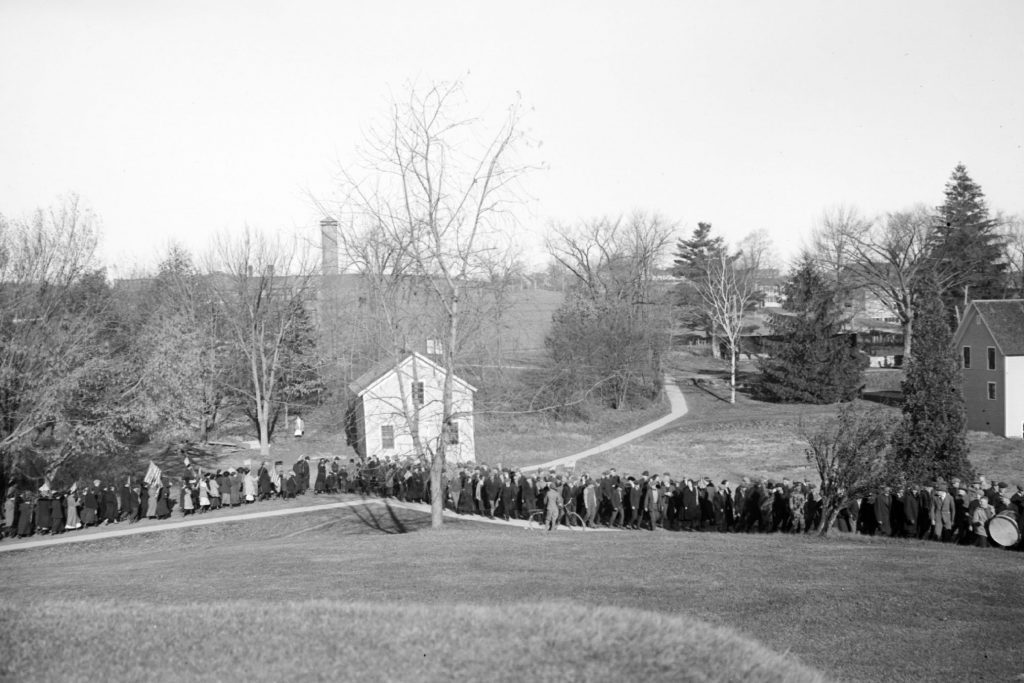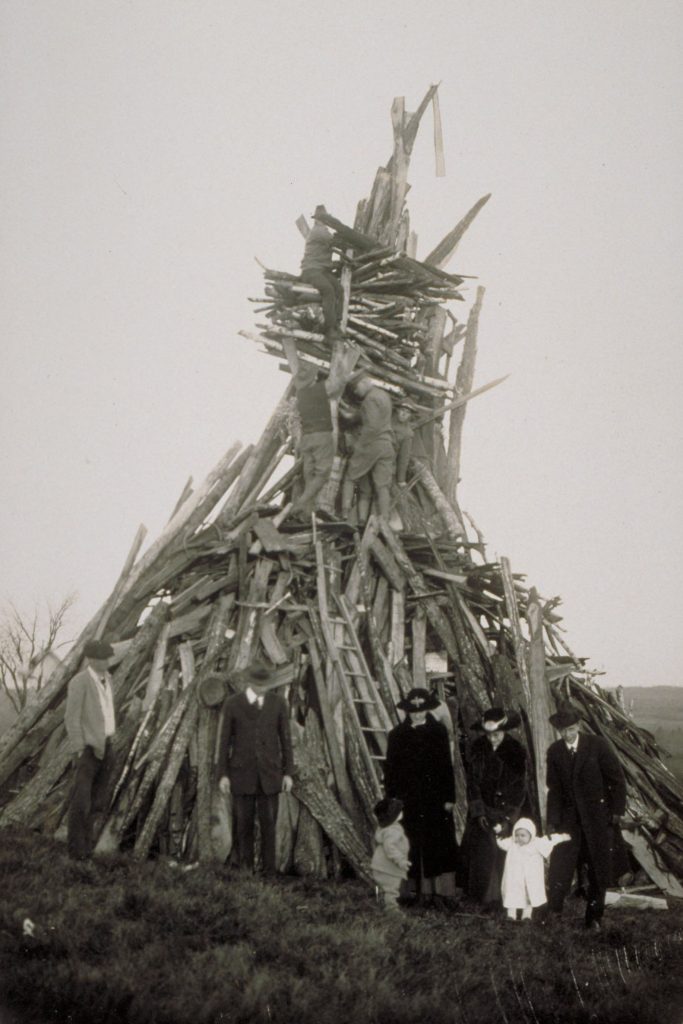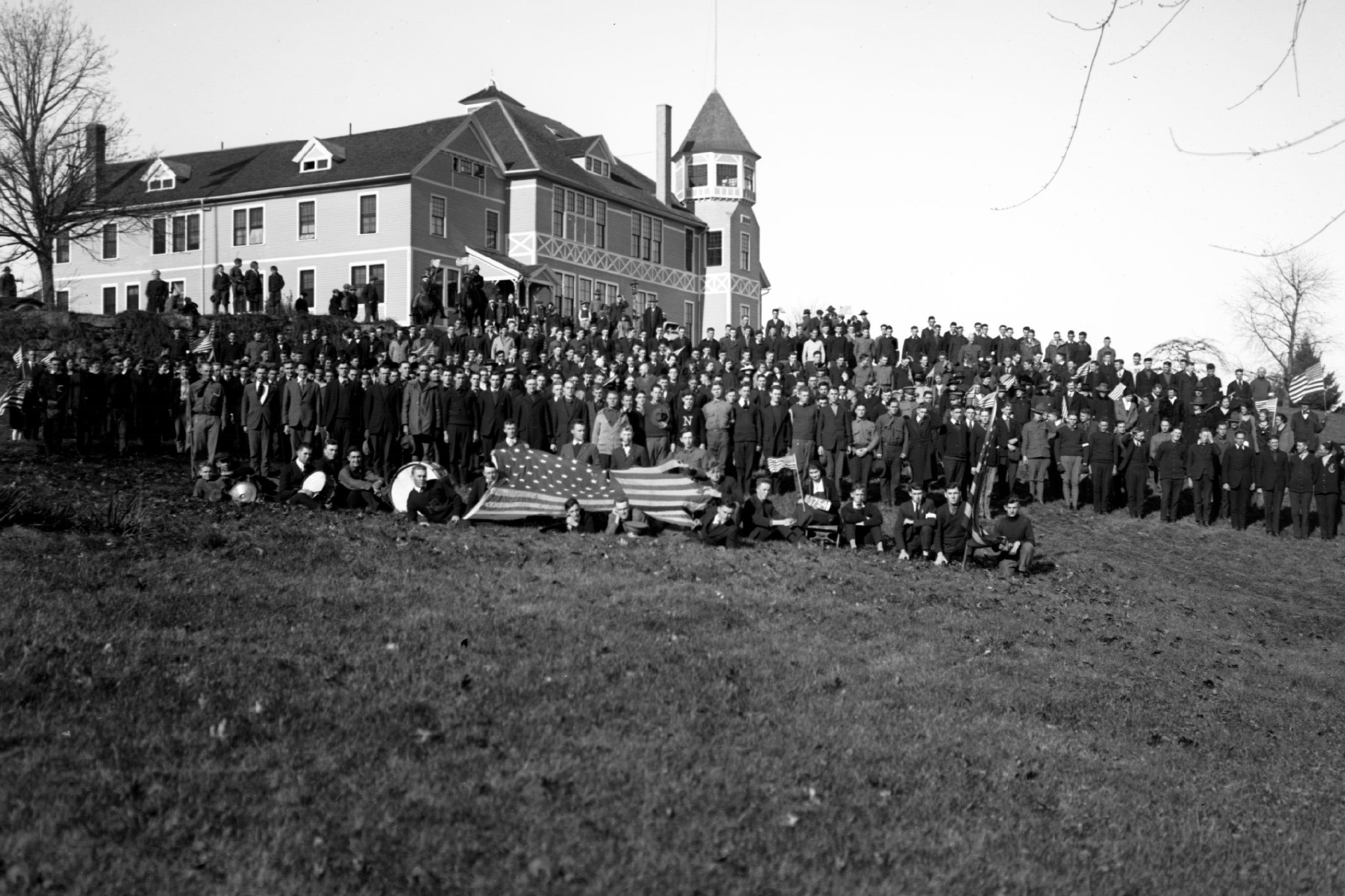It was not, as many hoped, “The War to End All Wars,” but when the First World War ended a century ago, the students, faculty, and staff at what is now the University of Connecticut celebrated as if it was going to be just that.
Sunday, Nov. 11 marked the 100th anniversary of the signing of the armistice that concluded World War I, and today the occasion will be marked on campus with a solemn ceremony at the Ultimate Sacrifice Memorial on the Great Lawn.

A century ago, not far from that spot, the news that the war was over prompted scenes of pure jubilation on campus: classes were canceled, songs were sung, students and faculty alike organized impromptu conga lines, and by nightfall a vast bonfire was built, leading to the burning in effigy of Kaiser Wilhelm, the defeated German leader.
“Active military rigor was gone, and with one accord, faculty, army men, and coeds formed into a parade,” wrote an unnamed reporter for The Connecticut Campus, the student newspaper. “The impressiveness of that scene, together with the significance of the moment, will long remain in the memories of those present.”
By the early afternoon, President Charles Lewis Beach read the official announcement of the armistice, and the assembled crowd sang “Mr. Zipp-Zipp-Zipp” and “Pack Up Your Troubles,” popular standards of the time. That night, the bonfire included group ukulele songs, synchronized displays of the flags of the allied nations, and the following remarkable scene, described by the Campus:

“It seemed very strange to see the staid and dignified faculty members come forth from the shadows bearing the gateways of Hell. Following in stately procession and enthroned on an ash barrel came the Kaiser with a petition to the devil for a place in his home. But when Rev. Marshall Dawson related Bill’s atrocities on earth, the devil, with a pitchfork in his hand, refused to accept the Kaiser as fit to live in hell, and finally the only recourse left was to add the Kaiser to the burning woodpile. And as Bill made his last appearance in the flames, the audience broke forth into joyous cheering.”
During the war, the campus of UConn – which at the time was called Connecticut Agricultural College – was virtually turned into a military camp, with hundreds enlisting in the Student Army Training Corps. Ultimately, 583 UConn students, faculty, and alumni would serve in the conflict, with seven losing their lives: Billings Avery Jr., George Bourn Jr., Harry Clinton, Charles Johnson, Fred Lyon, Arthur Stephenson, and Richard Arnold Storrs, a member of the family that donated the land that became the site of the University. He was wounded in battle before the armistice, and died two days after it was announced.
The war had other effects on the University as well. The largest number of women students to that point enrolled in the fall of 1918, and took over activities that had formerly been the exclusive preserve of male students, like staffing the campus newspaper and harvesting the apple crop. Ten days after the armistice, the women enrolled at the school met to form the Women’s Student Government Association, the first formal student government body of any kind at the institution.
Read more: A Piece of Connecticut History: Armistice Day, 1918



